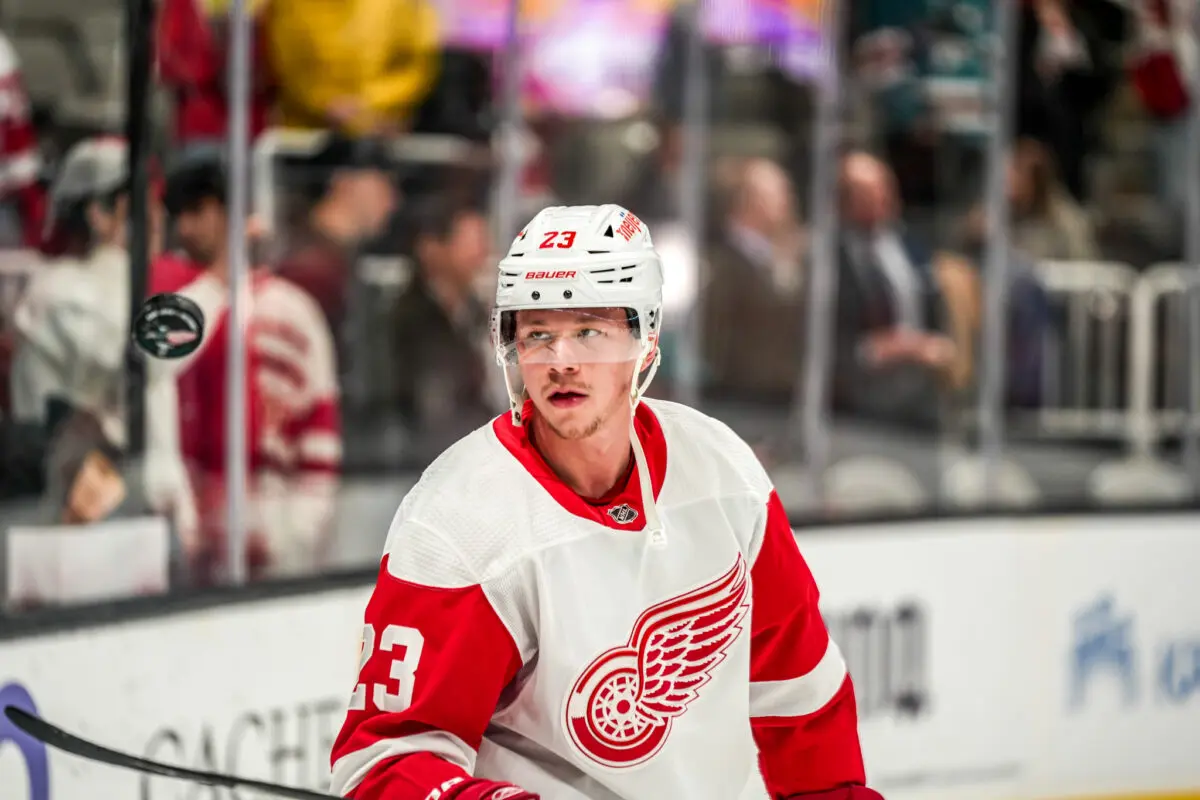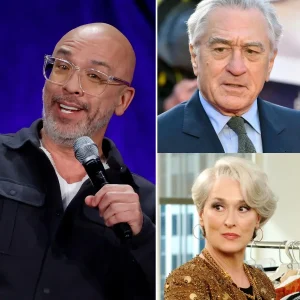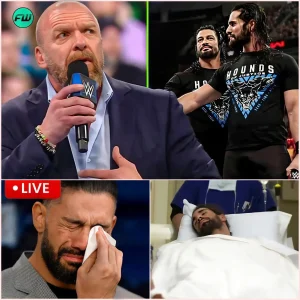The roar of the crowd at Honda Center still echoed through the corridors as Anaheim Ducks head coach Joel Quenneville stormed into the post-game presser, his face a mask of barely contained outrage. It was October 31, 2025, and the Ducks had just eked out a gritty 5-2 victory over the Detroit Red Wings, a win that snapped the visitors’ three-game streak and marked the emotional return of former Ducks goalie John Gibson to his old stomping grounds. But amid the celebrations, a bombshell accusation threatened to overshadow the highlights: Quenneville, the grizzled three-time Stanley Cup winner, pointed a finger straight at Detroit’s rising star Lucas Raymond, branding him a cheater who allegedly wielded high-tech gadgets to tilt the ice in his favor. The hockey world held its breath, wondering if this was the spark of the season’s biggest scandal – or just the heat of a hard-fought battle boiling over.

Quenneville, who took the Ducks’ helm in May 2025 after a controversial hiatus from the game, wasted no time in unloading. “He’s a cheater,” the 66-year-old barked, his voice cutting through the stunned silence of the media room like a slapshot. He claimed Raymond had been spotted fiddling with some sort of concealed device during a crucial second-period power play – whispers among the Ducks’ bench suggested it was a smartwatch synced to real-time analytics, feeding the young Swede forbidden insights on Anaheim’s defensive shifts. “We saw it clear as day from our side,” Quenneville continued, his eyes narrowing as he recounted the moment Raymond netted what would have been a tying goal if not for the controversial disallowance of Moritz Seider’s rebound attempt moments earlier. “That kind of high-tech nonsense has no place in our game. I demand the NHL launches an immediate investigation – strip him of any points if he’s guilty, and fine the Wings for turning a blind eye.”
The accusation landed like a body check, reigniting debates about technology’s creeping influence in the NHL. Fans and analysts alike have long fretted over the blurred lines between legal player-tracking data and outright sabotage, especially as wearables become as common as tape on sticks. Quenneville, drawing from his storied career that includes 969 regular-season wins – second only to Scotty Bowman – positioned himself as the league’s moral compass. His time behind the Chicago Blackhawks’ bench, where he orchestrated three Cups in six years, taught him the value of integrity, he said. Yet, this wasn’t his first brush with controversy; his 2021 resignation from the Florida Panthers amid the Blackhawks’ sexual assault scandal had left scars, and now, back in the fold with Anaheim’s rebuilding squad, he seemed determined to reclaim his legacy by calling out what he saw as foul play.

On the ice, the game had been a thriller laced with tension. The Ducks struck first through Troy Terry’s shorthanded beauty, exploiting a Red Wings’ miscue that coach Todd McLellan later called “unacceptable.” Detroit clawed back with a goal from Alex DeBrincat, but the pivotal moment came when Seider’s apparent equalizer was waved off for a “distinct kicking motion” – a call that NHL officials defended in a rare post-game statement, citing Rule 49.2. “Video review confirmed the infraction,” the league said curtly, though replays left many scratching their heads, fueling conspiracy theories about biased officiating in a back-to-back set for the weary Wings. Anaheim capitalized seconds later, with Mason McTavish burying his second of the night to push the lead to 3-1. Leo Carlsson’s four-point explosion – including two helpers on Terry’s insurance marker – sealed the deal, but it was Raymond’s quiet menace that drew the real fire.
Raymond, the 23-year-old alternate captain drafted fourth overall in 2020, has been Detroit’s offensive heartbeat, racking up 80 points last season and already chipping in three through the Wings’ early California swing. A product of Sweden’s Frölunda HC, where he became the youngest SHL debutant at 16, Raymond embodies the next wave of Euro talent blending finesse with fire. His hat trick in his 2021 NHL debut against the Blackhawks set the tone for a career that’s seen him named Rookie of the Month and lead Detroit in scoring two years running. But off the ice, he’s no stranger to scrutiny – earlier this year, former NHLer Sami Kapanen accused him of embellishing a high-stick injury at the World Championships, calling it “wrestling stuff” that drew blood for sympathy. Raymond shrugged it off then, but this time, the stakes felt higher, with Quenneville’s words echoing like a suspension waiting to happen.

Five minutes after Quenneville’s tirade, as reporters swarmed the Detroit locker room, Raymond emerged from the shadows of the visiting area. The arena’s post-game buzz had faded to a hum, but the air crackled with anticipation. Cameras clicked furiously as the lanky winger, towel draped over his shoulders, lifted his chin and locked eyes with the nearest microphone. A defiant smile crept across his lips – not the boyish grin of his hat-trick nights, but something sharper, almost predatory. Then, in a voice steady as a penalty kill, he delivered twelve words that hung in the air like fog over the Zamboni: “Accuse all you want, Coach – the tape doesn’t lie, and neither do I.” The room fell silent. No elaboration, no outburst. Just that cool dismissal, laced with a hint of inside knowledge that left Quenneville’s camp fuming and NHL investigators scrambling for footage.
What did Raymond mean by “the tape”? Insiders speculate it refers to the very video reviews that cleared Seider’s non-goal – or perhaps body-cam angles from the Wings’ bench showing no device in sight. In a league where player data from systems like SportLogiq and NHL EDGE is standard, the line between edge and cheat is razor-thin. Raymond’s retort, delivered without a trace of sweat, flipped the script: Was Quenneville projecting his own frustrations from a leaky Anaheim defense onto a kid half his age? McLellan, Raymond’s steady-handed coach, backed his star later that night, telling reporters, “Lucas is as clean as they come – this is sour grapes from a team that got lucky on a bad call.” The exchange has social media ablaze, with #RaymondCheat trending alongside memes of Quenneville’s scowl photoshopped onto old Blackhawks banners.

As the NHL’s Department of Player Safety gears up for a probe – expected to wrap by mid-November – the incident underscores a broader evolution in hockey’s purity. Wearable tech, once confined to training, now tempts with vibrations signaling opponent tendencies, raising ethical red flags from the IIHF down to junior leagues. Quenneville, ever the tactician, doubled down in a follow-up statement: “I’ve won three Cups without shortcuts – Raymond needs to learn that the hard way.” Yet Raymond, unfazed, suited up for Detroit’s next tilt against San Jose, scoring twice in a 4-2 bounce-back that silenced doubters for a night. His post-goal wink to the camera? Pure poetry, a nod to the twelve words that turned accusation into armor.
This clash isn’t just about one game; it’s a microcosm of the NHL’s high-stakes chessboard, where legends like Quenneville clash with prodigies like Raymond, and every pixel of tape could rewrite reputations. As Anaheim pushes for playoffs under their veteran skipper – sitting sixth in the Pacific after the win – and Detroit eyes ending a nine-year drought, the league watches closely. Will the investigation vindicate the kid or validate the coach? One thing’s certain: in a sport built on frozen battles, the off-ice wars burn hottest. And with Raymond’s smile still fresh in mind, hockey’s faithful can’t look away.






